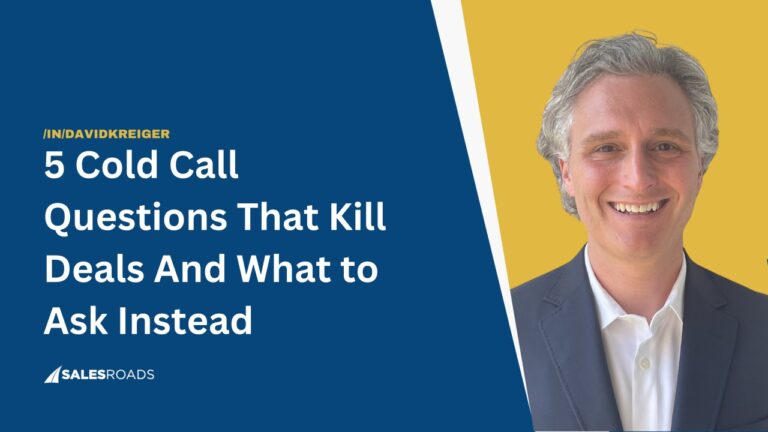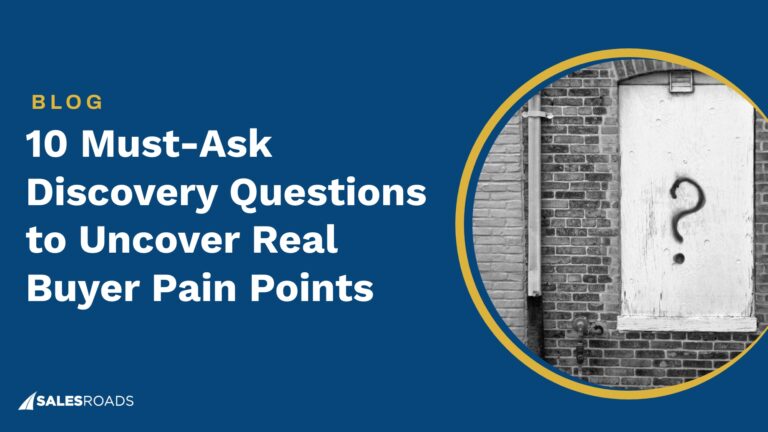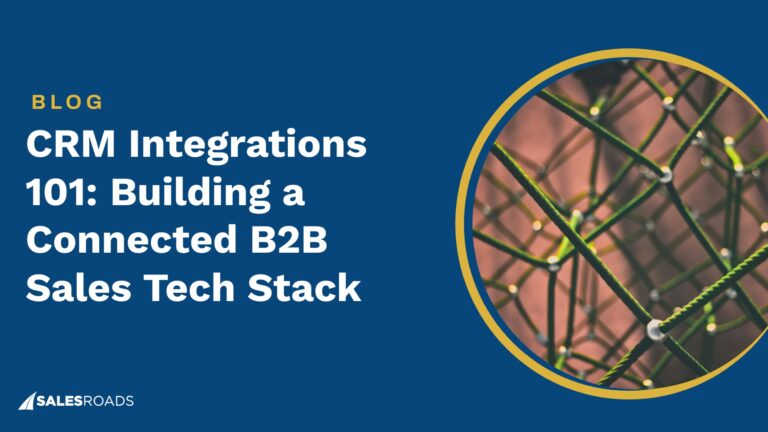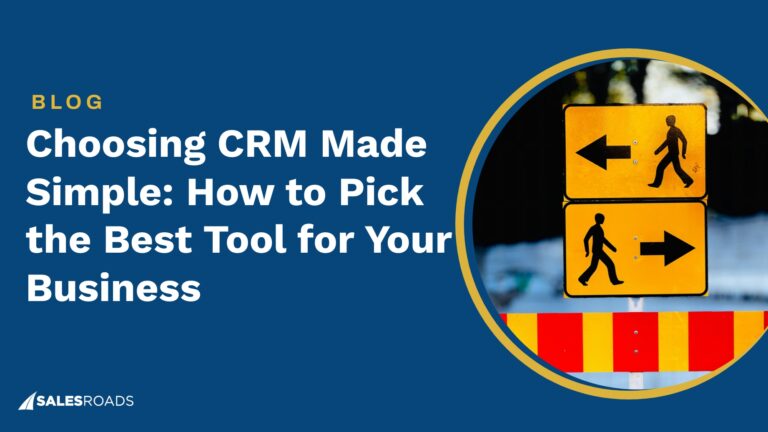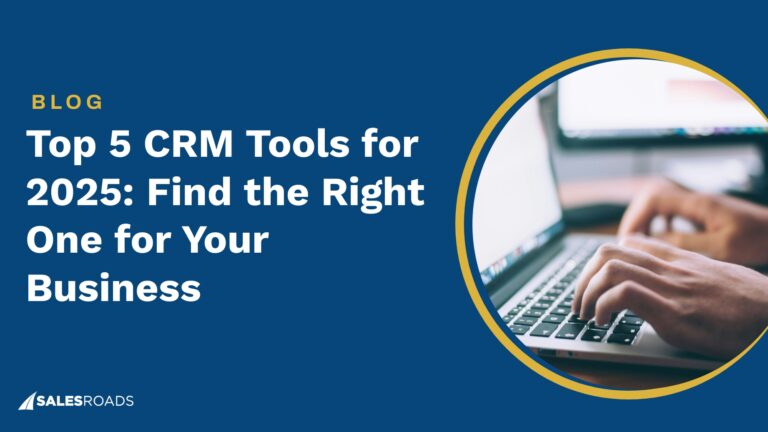Sell Like A Leader – Episode 16
In this episode, we dive into:
– Market entry to expansion: Initial steps in market entry, tackling challenges, balancing short-term and long-term strategies, lead generation tactics, the importance of parallel outreach efforts, outsourcing vs. internal team management, conversation value, complementary strategies, critical sales skills, and building trust and credibility.
– Rapid Fire Q&A
About Terence Lee
David Kreiger chats with Terence Lee, Protecht’s VP of Risk for North America. His deep understanding of the market has been key to rapidly facilitating Protecht’s growth across NA. Before Protecht, he held sales leadership roles at companies like Origami Risk and SAI Global, where he helped build successful sales departments.
Podcast Key Takeaways
- Terence emphasizes the importance of assessing company leadership before committing to market entry. He notes that the willingness of the leadership team to adapt and understand the challenges of entering a new market is crucial for success.
- Before diving into a new market, it is essential to have a thorough understanding of the addressable market and an effective go-to-market strategy.
- Terence discusses the need for brand awareness and lead generation efforts in parallel, pointing out that while brand awareness is hard to measure initially, lead generation should start immediately to build a market presence.
Connects
Connect with Terence Lee: https://www.linkedin.com/in/terenceplee
Connect with David Kreiger: https://www.linkedin.com/in/davidkreiger
Subscribe to the podcast and follow our Podcast LinkedIn page so you don’t miss any episodes!
Transcript
David: Welcome back. This is the Sell Like a Leader podcast, the podcast for revenue leaders who are on a mission to cultivate a high-performing sales team within their organization. I'm your host, David Kreiger, founder of SalesRoads, America's most trusted sales outsourcing and appointment setting firm.
Today, I'm thrilled to have an amazing revenue leader who I've gotten to know over the past few years, Terence Lee.
Terence is the Vice President of Protecht North America. He joined in 2022 to facilitate their growth, bringing extensive experience in governance, risk, and compliance.
Prior to joining Protecht, Terence served in various sales leadership roles, helping build sales departments for companies including Origami and SAI Global. Terence and I have gotten to work together over the past two years at SalesRoads. He's an amazing guy, an amazing [00:01:00] sales leader, and I'm just excited to hear his insights on bringing a product to market in another market.
So, Terence, thanks so much for being on the show.
Terence: Thanks, David. It's great to spend time speaking with you, and I share your feeling that I feel like we've gotten a really great opportunity to get to know each other and to work together and to really change the course of the company for the better.
David: It's been a wonderful relationship, and we're just excited what Protecht's doing and what you've done, which is just phenomenal. So let's jump into it. I think that a lot of sales leaders, as they're trying to think about bringing a product to market, you know, they think about finding your product-market fit for a new product.
What you've done amazingly throughout your career is take something that has been proven in one market
and bring it to a new market. So for Protecht started in Australia, bringing it successfully to North America. And so thinking about it through that, what are some of the [00:02:00] first things that you're thinking about as you are making that transition for a company and bringing them into a new market?
Terence: I think the first thing is actually maybe not something that most people would really think about, which is who's running the company. So before you become a leadership member to bring a foreign software company into North America, it starts with who's actually leading the company and what is that personality like?
Can they really grasp and understand not just how hard this is going to be, but how all of their timelines are going to be pushed aside because it's probably going to take longer and cost more than they actually imagined? So for me, it begins with the leadership team, and then their ability and willingness to accept changes to their plan and to understand that there's going to be curveballs along the way.
Once that's out of the way — and I bring that up because that [00:03:00] comes up in the interview process — you have to get to know them enough in the interview process to determine if you really think it's going to work. And it does matter, of course, what the product is.
It always does. But if you have any reservations about the leadership team and their ability to actually execute this plan, then you shouldn't take the gig. You shouldn't do it because you're going to fail. You, by yourself, are not going to be able to make it successful unless you have a really strong leadership team behind you.
So I think in my case, I've been fortunate to do this.
Beyond that, once you get going, there are so many things that you need to address. You have to address the talent that you hire. Those first few hires are critical.
You have to absolutely, positively understand product-market fit. That's extremely important as well.
David: So I think that's really an interesting place to start, because I think, as you mentioned, I don't think people would have necessarily thought that, but I think it is so critical. [00:04:00] Especially in a leadership role, you need to both have the support, the maneuverability, and the patience of the person who you're reporting into, and if you don't get those things right, you can have the best strategy in the world, but they, after a few months, might say, listen, this isn't working and you don't have the support or the time or the room to be able to do it.
So I'm glad you brought that up, because I don't think that is something that people do think about first. They think about the product, they think about whether they can do the job, not whether they're going to necessarily have the support to do the job.
So once you feel that you do have that support, what is it that you're trying to tackle first? How are you developing that strategy and that vision for where you want to take the company in that new market?
Terence: There's a period at the beginning — a period of time. Some people may call it the honeymoon period. I just think of it as the planning period. You have a limited period of time to really get your arms around [00:05:00] the task at hand: to understand the addressable market, to understand the go-to-market
strategy — which means you have to work very closely with your marketing team — and of course, to understand product fit.
And then you have to get to work, which means now all the hard work starts. For me, that always begins with lead generation. It always begins with writing messaging and executing a lead generation program to see if other people outside of your organization are interested in the product and the service that you have to offer.
Because if they aren't — until you talk to 30, 40, 50, a hundred people and gauge their response to your offering — there's a gentleman I did some volunteer work with who ran a think tank, an incubator actually, in Atlanta. And he used to say to me, until you test your ideas with real potential buyers, it is simply [00:06:00] a fantasy in your head.
And that's when your plans really start to take shape. So I focus on lead generation and then, of course, hiring the best sales talent that I can find.
David: With that, and as you're trying to think about — and I love that because you're basically trying to talk to as many companies as possible, as many bodies as possible — to understand the messaging, understand what resonates, understand their pain points. And how do you marry it with understanding, for instance, with Protecht, you guys understood that market, you understood what their pain points are.
How does that frame your hypothesis when you start the lead gen program and start having those conversations? Or do you try to put it aside because two markets are sometimes just so different? Does it help, or is it just something that could give you some biases?
Terence: All the research that leads up to your go-to-market strategy it builds your program. And all that research [00:07:00] goes into the messaging and the strategy that you're going to actually use to talk to those people. You have two parallel activities that have to happen very rapidly and in parallel.
One is brand awareness, and the other is lead generation. When we came to the North American market, we were working with a marketing company here to build brand awareness. And on that kickoff call — and this was probably the second week I was with the company — the CEO of that marketing company said, I can focus on brand awareness. I can focus on lead generation. What do you want? And I said, leave lead generation to me. I need you to work on brand awareness.
Because what happens is you end up making 1,500 phone calls a week to people who have never heard from you before. And you have to understand, and you have to accept that this is going to go on for probably two or three years until brand awareness [00:08:00] catches up and ultimately surpasses.
And then people start to pull from you, meaning they go to the website and make demo requests. They reach out to you on LinkedIn and say, I heard your name, I want to learn more about you. That process of building brand awareness it is a painfully long and difficult process.
And unfortunately, you can't easily measure it. You have to look for the signs of it, typically through your lead generation activities. You've got to be able to have both of those things going at the same time — lead gen and brand awareness — so that you can build a pipeline of opportunity for the organization.
David: When you're thinking about the lead generation program and you've come into this a few different times, what are you trying to do? How do you structure it? How do you build that? How do you think about it? Are there any key things that you think through as you're trying to build that from scratch as one of the very first things that you're doing when you're bringing a company to market in North America?
Terence: [00:09:00] There's — as you know, because you run a great podcast and a great company — there's probably half a dozen, at least, different ways to go about this, different ways to think about it. Some people will claim that outbound cold calling is dead or is ineffective. I don't think that's true because you have to talk to people.
You have to talk to them, and you don't talk to them through email campaigns. You talk to them through conversations. And now that doesn't mean go spend half a million dollars and go to every trade show that you can go to, but you better be prepared to go to a number of significant trade shows if you want to have the actual conversation. So I think the focus is on — it's always a multi-pronged approach.
But outbound cold calling is a great way for people to have those conversations. Email campaigns are also a great way to get people interested. And you're doing all of this in parallel while marketing [00:10:00] is doing their job and driving awareness and driving people to the website, hopefully so that they will convert and become inbound leads.
And then that tees you up to have better conversations.
David: That's great. I love how you think about all these things in unison because people sometimes say, okay, I'm going to choose one. And sometimes, listen, for budgetary reasons, maybe you have to be a little creative, but they all work together on different time horizons.
Terry: They do.
And I think there's a crossover point where you can start with a whole bunch of outbound and that's, I believe, how many people should — at least in enterprise SaaS software — start with a whole bunch of outbound cold calling. To get those appointments, to have those conversations, and you're going to get a lot of no's or you're going to build a fair amount of pipeline that is never going to close because they weren't really fully qualified, but that's okay.
You need to have those conversations. You need to understand their pain points and what's of interest to them. And then over [00:11:00] time, as brand awareness really starts to gain traction, that outbound activity will become more valuable. Meaning the opportunities that are created from the outbound will actually stick and hold, and close.
But you have to be doing both at the same time, because it's extremely difficult to measure brand awareness and say, okay, now we're ready to do outbound. Good luck. It's very challenging to do it. It doesn't mean it's impossible. It is expensive, but I believe you need to do them both.
David: They're complementary, and so they help each other and they inform each other, because as you're doing outbound, you learn certain things or certain messaging or certain pain points that are resonating. You feed that back to marketing, and they can leverage that, and vice versa.
They might be seeing certain traction on certain types of things that they're doing — whether it's display, ads, emails — and it can become not only mutually reinforcing, but make both channels better.
Terry: Yeah. I agree.
David: So you [00:12:00] also brought up talent, which obviously is really important in getting the best sales talent. How do you look at sales talent? Especially early on — you know, I had an interesting conversation on the last podcast about how you look for different skill sets at different times in the company.
If it's a very early-stage company, you might look for somebody who's maybe more curious because they're trying to learn and whatnot. Later-stage, you might look for someone who's just really about the process and really good at following the process. When you bring in an existing enterprise SaaS solution to a new market, how do you look at the hiring with AEs? Who are you looking for to be on your sales team when you're bringing a company to America?
Terry: Well, there's a couple of skill sets that you need to have in place in order for the salespeople to actually be successful.
Uh, you need to have marketing talent that understands how to write outbound messaging and LinkedIn messaging, and to do digital marketing. And I firmly believe digital marketing is super [00:13:00] important to lead generation.
But the other thing you need to do is you need to be able to demonstrate product. So you got to have a great discovery call script and program, and you have to practice the daylights out of it. But the same thing is true with your demo. You need to hire sales talent that can actually do a lot of things themselves, because you may not have the resources in place at that time ready to go, and you don't want to wait.
So with Protecht, I sought out sales professionals that were, first of all, former inside sales professionals.
So I knew that they could do prospecting and knew that they could navigate a conversation to do their best to convert it to an opportunity. But also, I sought out sales professionals that were doing their own product demonstrations at the time, because it was going to take time for me to really build a solid demo capability with a sales engineer, which is a classic approach.
And so I had to find the right fit of [00:14:00] salespeople. And of course, I needed people who already knew what the GRC market was about and had a good understanding of what the use cases are, because it happens to be a really complex market with different phases of the organization.
As you grow, you might seek other types of talent. I don't care about things like age and things like that. I care about: Can you do a great product demo? Can you write a discovery call script for a new use case if there isn't one already available? Do you deeply understand those use cases?
You hit a point often where you start to look at other vertical markets, in which case, I seek out a sales professional who knows that vertical market well. I'm not a big believer in the old classic Rolodex approach. I'm going to hire a salesperson that has lots of customers and contacts that they can draw on.
There is some merit to that. When I run that, think that through in my head, put yourself in their shoes. You're the sales professional from XYZ company who sold [00:15:00] them product a year ago, and now you're going to call them and tell them you found a better product.
I don't put a lot of weight into that. I care more about their personalities and their behavior.
David: Yeah. Understanding the persona, I think, sometimes is more important than understanding the industry that the company is actually in.
Terry: Yeah, and I think the challenge with personas — in the GRC market — the personas, there is consistency to them, but you have to go beyond the persona and look at the size of the organization.
Because a chief risk officer in a two-billion AUM bank is going to be facing different problems than a chief risk officer in a 25 or 30-billion AUM bank, because there's different challenges and scale associated with the work that they do.
And there's going to be different silos of other resources that they have to collaborate with. Plus, they're going to be under different, at least in banking and risk — there's going to be different regulatory requirements.
And it's important [00:16:00] because if you can make it in North America, then you've demonstrated you can make it. So it tends to drive up the valuation of a company. But it is the most competitive market on the planet. So it is the most difficult for an organization to really make it here.
And I've been with organizations that tried to come here, and it didn't work. It failed. Usually, because of some of the things I mentioned before, the leadership wasn't committed to it. The leadership had a certain way they wanted to do it from 5,000 miles away. That just didn't resonate with the product fit.
David: You've talked about the importance of marketing. And I think the importance of penetrating a market is building that trust and credibility in that market. And as you said, it takes time.
What are some of the things, when you're working with that marketing company — or maybe there's other ways you want to build trust and credibility; I don't want to just frame it around marketing — what are some of the [00:17:00] things that you really look to do or think are important as you're making your first impressions in a market? And trying to build over time that trust and credibility that's going to pay dividends over time?
Terry: So I look at myself as the CEO of the region, and to me that means I should have a voice in the market. So I seek out speaking opportunities where I can talk about problems and challenges within the market itself.
I've done a lot of public speaking at events for business continuity management and vendor risk management, and other related use cases and topics.
And I think that's important because I think that lends credibility to the company — that people see me, and therefore the company, as having credibility and knowledge and, most importantly, being able to add value to the buyer's experience in the market. I think that's important.
And it doesn't always have to be me, but it has [00:18:00] to — somebody has to be out there vocal and speaking and commenting and blogging and really raising awareness that sure, it's software, but — and you see this with some enterprise SaaS companies — when you dig in and you realize, for example, that they don't have a lot of deep knowledge in risk and compliance in the use cases.
They're — for better or worse — they're just a software company. They're not a subject matter expert who's going to advise and guide the client over the next six or seven years.
We try to build that persona capability of the company. And the other thing we do, of course, is we really focus heavily on building long-term relationships, partnerships with our customers, because you're going to need them as references.
So you need a high degree of focus. You have to stay within a particular vertical market to build expertise, but also to be able to use them as reliable references. Expand within that vertical market. If you chase every vertical market that [00:19:00] moves, you're never going to get there, because a customer in manufacturing is not a reference for a bank, just like a bank is not really a great reference for somebody in manufacturing or healthcare and logistics.
So you have to stick to a plan, at least the first couple of years, before you start expanding.
David: I think that's a really powerful mindset and way to try to go to market. I want to go full circle on a few other just tangible things here.
And so you're coming in, and you had to make a few decisions. You decided you were going to hire the marketing company, you're going to do lead gen — how did you approach those decisions of building the team, hiring salespeople, potentially building a marketing team or a lead gen team in-house versus outsourcing? What was your mindset around how you build a team and how you start up basically, in some ways, a new organization?
Terry: So, first we had a plan. The [00:20:00] company had a plan for penetrating North America before I was recruited and hired for them. And the first thing we did was go through that plan and tear it apart. And now that they had hired me—someone with experience in the market—I was able to challenge them on certain decisions that had been made.
What's interesting is it did not dramatically change the plan. It was a fantastic plan that the company had put together, going back to what I said about having the right leadership team behind you.
And we tried a few things fast. Some of them didn't work out, and we changed. For example, we hired SalesRoads at the same time I hired my own inside sales person on staff, and with a division of labor between what your team was doing and what my inside sales rep was doing, and over a few months, just by digging through the data—’cause I have a saying that data don't lie—it was clear that my own inside sales resource was not tooled well enough to [00:21:00] be able to execute at a high degree of performance like your team could. So we changed resources. We let that person go and shifted the budget over to increase the headcount.
That was not something that we had planned to do. We thought that we would stick with a small team in-house and an outsourced team as well. The one thing I was clear about was we can't build a big inside sales team, in my opinion, of internal resources, unless you're prepared to also hire someone to manage that team.
Because my feeling is once you get to about three inside salespeople, you have to have somebody dedicated to overseeing and managing that team. Because they need to be able to pivot and make changes in direction and messaging, and strategy almost daily, if necessary.
And you can't, in my opinion, run the inside sales team of that size internally and run and build the sales organization and work with marketing and product all at the same [00:22:00] time. You have to pick where you're going to focus. In my case, it was revenue generation and pipeline build with the sales team, plus lead generation with your team and marketing. So the benefit of outsourcing to SalesRoads was I had a hundred percent confidence in your team's ability to actually run and manage the team.
That's been a big boon. So we changed gears a little bit there. We also made some changes in some of the marketing strategy. We thought we were going to do a whole bunch of marketing events, and we started doing them and then started feeling like a chicken-and-egg thing between brand awareness and lead generation.
And there's an expectation that you're going to generate solid opportunities from your live conference events.
I personally think that, sure, that's great, but you're really there for brand awareness. But it's a very expensive way to get brand awareness. So, um, we pared our strategy back—less regional, small events, which can be effective, but they take a lot of resources and they eat up a lot of budget. [00:23:00] And instead, just a couple of large annual events that are really focused on our target market, and then shift that other budget for those regional events back into digital marketing.
David: And the last thing I want to ask before we get into our rapid-fire questions is to go completely full circle to your first answer. And you talked about how it's really important to have the right leadership that is behind you, has the right vision, has the right types of patience, is going to put the right type of budget.
At the same time, you've got to report back to them. You've got to communicate progress, results through that period of time. And so what are some of the best practices to make sure that you're able to report back, show the progress, even if it takes a—it takes a while, especially when, you know, sales cycles are long and things like that?
Terry: So, you've touched on something that's super important, and that is that the people that you work for aren't here, often thousands [00:24:00] and thousands of miles and many time zones away. In my case, right now, there's a 14-hour time difference between me and Sydney, Australia, where the leadership team sits.
And that means that our meetings are held in the evening, Eastern Time. My 6 p.m. is their 8 a.m. the next day, and which means I work several evenings a week, because it's the only time we can speak to each other. So we established a weekly—we call it a cadence call. We established a weekly cadence call, and it's basically a review of the previous week's activity for the leadership team, and it's wide open.
So the thing about opening a region is you have to be—you have to be patient. And you have to accept what might feel to some like micromanagement or intense scrutiny of your decisions and activity. It's necessary. It's necessary because they can't walk down the hall into your office and ask you a question or [00:25:00] see what's going on in a particular event that happened at—maybe a big demo that you had at 10 o'clock Eastern Time that morning—because they were asleep during that demo.
So you have to communicate often, but you have to communicate precisely and crisply, which means I don't message my CEO 10 times a day on Teams. As we get towards closing on opportunities, the frequency will kick up so that he always knows where we are with our pipeline and our opportunities and what our forecast is going to be.
But the weekly cadence is really good. And we cover every aspect of the business. We cover: Sales, Marketing, Implementation, Customer Success, Advisory, and Support. We do it in about 35–40 minutes once a week. We've gotten really, really good at it, which of course means you have to have a really great set of reports that people who aren't here can easily see.
So we use the usual CRM tools, plus a couple of others, to make [00:26:00] sure that we are really capturing what's going on and reporting it.
David: All right. Terry, let's jump into the last part of our podcast that we like to do with our guests. We'd like to ask a few rapid-fire questions. And so I'm going to shoot a few things at you, and we'd love to just get your perspective. Sound okay?
Terry: Sure. Shoot. Fire away.
David: So, first is what is one thing that people don't give enough value or attention to in leadership?
Terry: People. The people that work for you have lives outside of what they do for their salaries and compensation. And that influences their behavior. You have to be empathetic and take an interest in those people. I try my best to build an environment where everybody on my team would be willing to go through a wall for me because I will do the same for them.
I think the one thing that people in leadership overlook—they talk about it—but do they really focus on working with their people?
David: And I've seen that [00:27:00] firsthand and how Terry's team would walk through a wall and more for him. So, what is one skill you advise everyone in sales to master?
Terry: There's so many, but I think the salespeople that are the most effective and successful—they're positive people who understand the urgency in selling because you've got competition. I think the one skill I, salespeople, is to be positive, have a positive outlook. And I guess it's more than one, it's two.
And that is to be urgent and persistent in your activities.
David: That's fantastic. Favorite business, leadership, or sales book?
Terry: There's so many. I think my favorite, which is not actually a sales book, but it is a book called Obviously Awesome by April Dunford. It's about product fit, and it's an easy read, meaning it's really well-written. I've heard her [00:28:00] speak half a dozen times, and I think she's brilliant and she's a really wonderful person. But definitely Obviously Awesome by April Dunford.
You'll learn more about product fit, which translates into sales, than any other text that's out there.
David: I will check it out. I have not. Your favorite quote, mantra, or saying that inspires you as a sales leader?
Terry: So I think it's probably one that I came up with myself in the heat of the moment years and years ago. And it was in a conversation with a sales team, and they were going on about all the things that were wrong in the product organization, the pipeline, and marketing. And I stopped the team and said, hold on a second.
Everything cannot suck at the same time.
The universe will not allow it. And I firmly believe that. You might think that you don't have enough leads, that the conversations aren't working, you're struggling with demonstrations—whatever. Okay, you have [00:29:00] problems and challenges, but that's why people pay you—to come solve those problems every day.
Everything cannot suck at the same time.
David: That is fantastic. What is the most important goal or project you're working on right now?
Terry: I'd say right now the company is in a period of really hyper-growth, so everything that me and my team do has to be done to the absolute best of our ability. Every introductory call, every demonstration, every proposal presentation—every step of the sales process—we have to do it as best as we possibly can, because we need to maintain that track of hyper-growth.
It's important to the valuation of the company, and it's important to our customers as well.
David: That is fantastic. Terry, this has been an amazing episode. It's great to speak with you and learn from you today. And for folks who've been [00:30:00] listening, if they want to learn more about you, connect with you, learn about Protecht, how can they find you?
Terry: So I am online and everywhere. I'm on LinkedIn as Terrence—T-E-R-E-N-C-E—Lee in Providence, Rhode Island. Look me up, direct message me, be happy to have a conversation. You can find us at protechtgroup.com—P-R-O-T-E-C-H-T group dot com. And you can reach me, of course, as Terrence.Lee at—
David: And that is a wrap for today. Thank you all for listening to another episode of Sell Like a Leader. If you like what you heard here, don't forget to subscribe on your platform of choice. And please always feel free to reach out to me on LinkedIn with any thoughts, feedback. Always love to hear from our listeners. Thank you so much for joining us today.
Thank you, Terry, for your time. It was great chatting with you.


